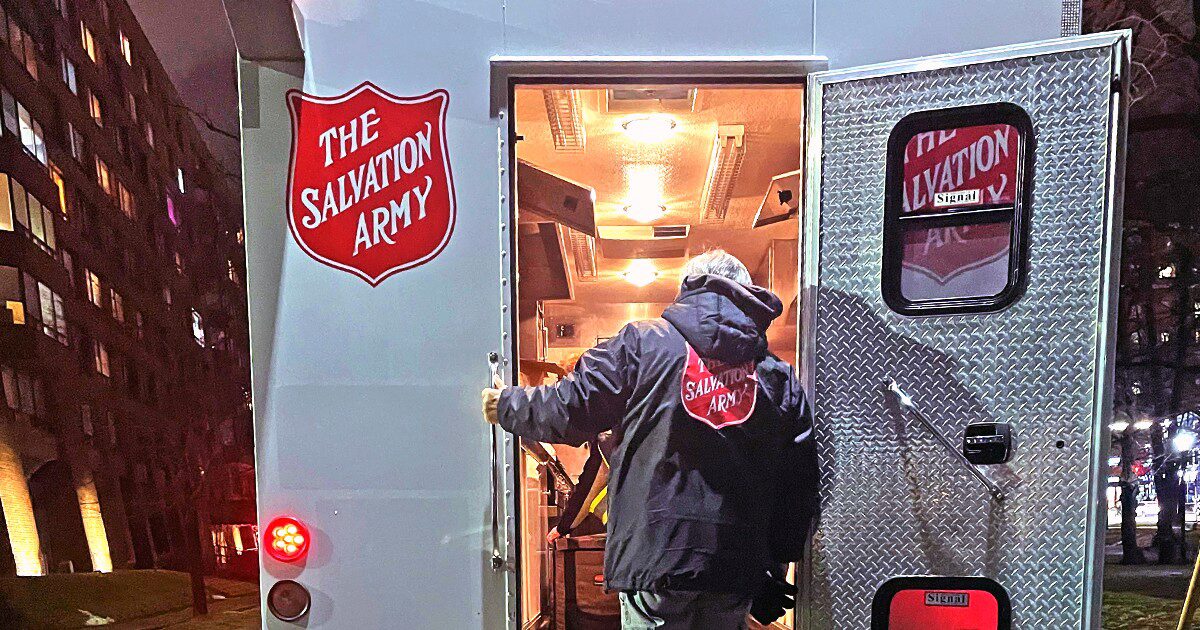Our lives are defined by relationships. Whether with our Creator, parents, spouse, children or friends, each connection helps us find our place in the world. That primacy of relationship doesn’t end when we come to work, whether it’s the front line of need on a street corner, a corps or thrift store, or the spare bedroom of our house during the pandemic. Relationships permeate why and how we work, and the value we place on that work. Honouring the fundamental nature of these connections is why The Salvation Army in Canada and Bermuda recently changed the name of “employee relations,” which is typically known as “human resources,” to the human relations department.
This is more than simply a different department title. It reflects the new way the Army will develop, deploy and value its most important relationship, the one with the people who carry out our mission. Reciprocity is integral to this change. The Army needs engaged and motivated staff to be an agent of hope. And officers and employees need the Army not just for a paycheque, but also as a God-inspired organization through which we can live our calling to be a transforming influence. As in every relationship, we need each other.
The human relations name change is one of many ways the Army will forge a new relationship with employees. When I was hired as the chief human relations officer last August, work began right away on developing a territorial human relations strategy. In terms of the renewed culture we are working to put in place, the Army’s values will be translated into four commitments that will shape everyday activity.
In the year ahead and beyond, as we breathe life into this new strategy, there will be changes in Salvation Army workplaces. Many human relations functions will be centrally co-ordinated from territorial headquarters and locally delivered for mission as we transform this organization for growth. This allows for well-qualified people to shape and deliver best practices. Our administration will be streamlined. There will be an increasing focus on better serving people on the front line. Going forward, there will be one human relations team providing the quality required to help the Army develop renewed fitness for mission.
As these changes weave into the operational fabric of the Army, they will touch on staffing strategies, organization design and workforce planning. We will continue our focus on leadership development and bring new attention to succession planning, and find better ways to measure staff engagement and what we call staff life cycle experience.
The changes in human relations will impact everyone who works for the organization. But they are not happening in a vacuum. The new strategy is in support of Mobilize 2.0, the exciting transformation of The Salvation Army in this territory.
Stay tuned for more information about how the new culture fostered by human relations will help the Army’s workforce to better serve others. Communication is central to the strategy and we will be developing innovative ways to keep people informed about what’s going on. Our commitment in everything we do is to contribute to meaningful work, a sense of hope and optimism, an environment of trust and inspired results. Because that’s how we build a better team. It’s how we deliver better outcomes. It’s how we strengthen our relationships.
Jan Barton is the chief human relations officer for the Canada and Bermuda Territory.
Illustration: Jane_Kelly/iStock via Getty Images Plus
This story is from:
This is more than simply a different department title. It reflects the new way the Army will develop, deploy and value its most important relationship, the one with the people who carry out our mission. Reciprocity is integral to this change. The Army needs engaged and motivated staff to be an agent of hope. And officers and employees need the Army not just for a paycheque, but also as a God-inspired organization through which we can live our calling to be a transforming influence. As in every relationship, we need each other.
The human relations name change is one of many ways the Army will forge a new relationship with employees. When I was hired as the chief human relations officer last August, work began right away on developing a territorial human relations strategy. In terms of the renewed culture we are working to put in place, the Army’s values will be translated into four commitments that will shape everyday activity.
- The value of service will result in our commitment to ensure people have meaningful work.
- Our value of hope will be sought in a sense of optimism.
- The values of dignity and respect will translate into an environment of trust.
- The value of stewardship will mean striving for excellence, impact and transformation, creating inspired results.
In the year ahead and beyond, as we breathe life into this new strategy, there will be changes in Salvation Army workplaces. Many human relations functions will be centrally co-ordinated from territorial headquarters and locally delivered for mission as we transform this organization for growth. This allows for well-qualified people to shape and deliver best practices. Our administration will be streamlined. There will be an increasing focus on better serving people on the front line. Going forward, there will be one human relations team providing the quality required to help the Army develop renewed fitness for mission.
As these changes weave into the operational fabric of the Army, they will touch on staffing strategies, organization design and workforce planning. We will continue our focus on leadership development and bring new attention to succession planning, and find better ways to measure staff engagement and what we call staff life cycle experience.
The changes in human relations will impact everyone who works for the organization. But they are not happening in a vacuum. The new strategy is in support of Mobilize 2.0, the exciting transformation of The Salvation Army in this territory.
Stay tuned for more information about how the new culture fostered by human relations will help the Army’s workforce to better serve others. Communication is central to the strategy and we will be developing innovative ways to keep people informed about what’s going on. Our commitment in everything we do is to contribute to meaningful work, a sense of hope and optimism, an environment of trust and inspired results. Because that’s how we build a better team. It’s how we deliver better outcomes. It’s how we strengthen our relationships.
Jan Barton is the chief human relations officer for the Canada and Bermuda Territory.
Illustration: Jane_Kelly/iStock via Getty Images Plus
This story is from:










Comment
On Friday, May 28, 2021, Dennis Brown said:
Leave a Comment